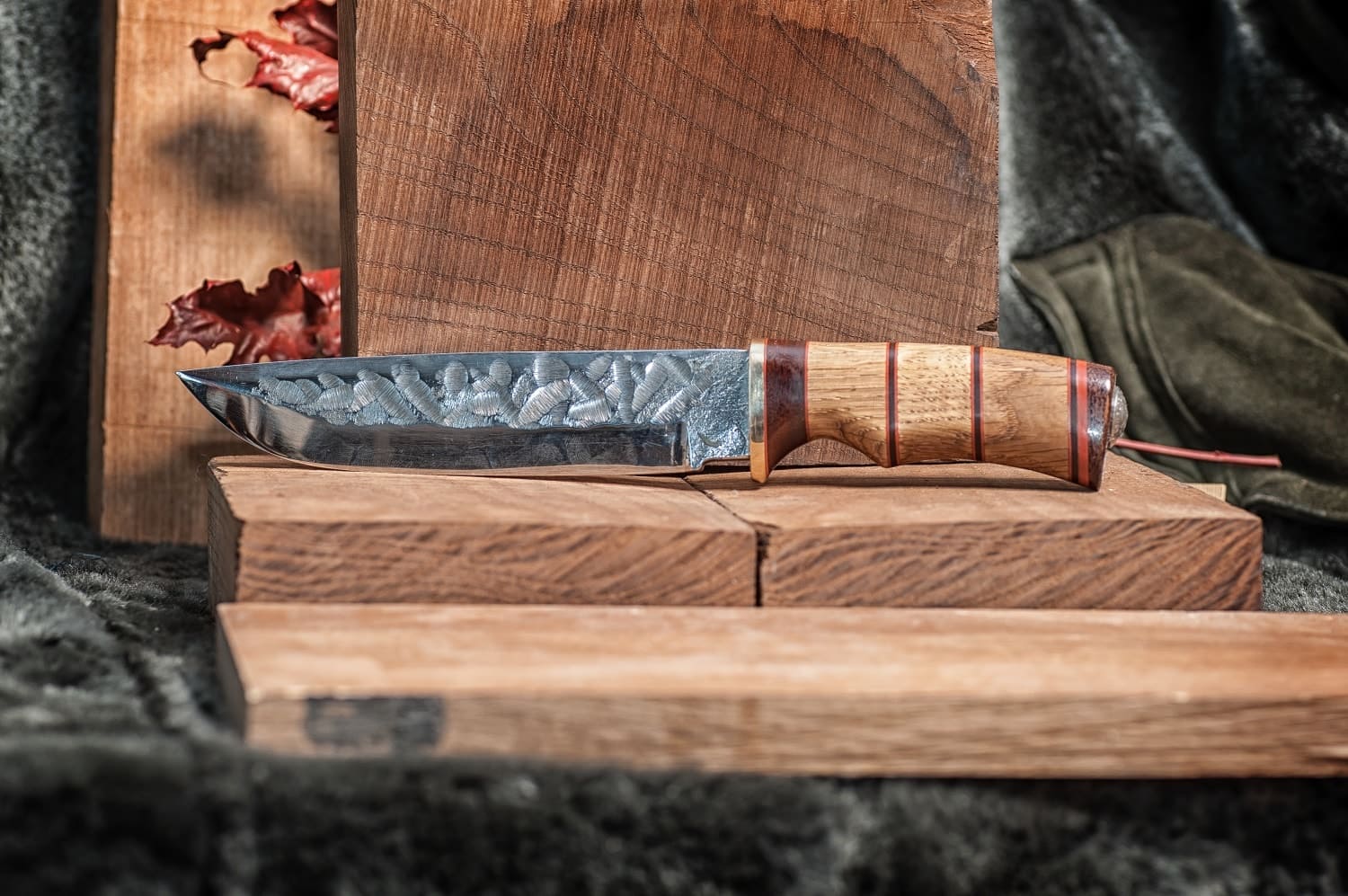For nearly a decade now (yes, “Game of Thrones” premiered in 2011), they have been trying to unravel the secret of Valyrian steel and even smelt its analogue.
The magic steel of the Valyrians
“Game of Thrones,” the award-winning television series of the North American television network HBO, lasted for eight seasons and has consistently fascinated fans around the world with its stunning visual effects. The fates of legendary characters, their wars and a struggle for power intertwined the fantastic storyline. To a large extent, the show attracts its audience with colourful costumes and lifelike props. The swords skilfully wielded by the characters of “Game of Thrones” have attained a cult-like status, becoming almost synonymous with the saga itself, and fans from all over the world pay a lot of money to get replicas of the legendary Dark Sister or Longclaw. But what makes these weapons so unusual?
The unique swords’ secret lies in the material from which they are made. The mythical Valyrian steel, exceptionally sharp, sturdy and light, was invented in the ancient Valyrian Empire. Due to its inherent properties, Valyrian steel can be considered an ideal material for the manufacture of blade weapons.
The “Known Legends” of “Game of Thrones” claim that the magic steel was smelted in dragons’ fiery breath and quenched using special spells. The Valyrians mined raw materials for its production in the vents of volcanoes that were spread over the empire. This mountain range was called the “Fourteen Fires”.

Even in the heyday of the Valyrian Empire, local weapons were expensive. Subsequently, when the secret of their production was lost in the centuries, the swords of the Valyrians proved to be almost priceless. Many craftsmen tried to smelt an analogue of the magic metal, but all attempts were unsuccessful. Only a few of them have learned how to re-smelt the existing weapons from Valyrian steel to create new swords.
The magical facts about Valyrian steel
The creators skilfully wove magical threads mentioning the miraculous material into the narrative plot.
For example, it is believed that the Valyrians adopted the technology of steel production from the Rhoynar nomads who lived in Essos, one of the continents of the “Known World”.
Kraznys mo Nakloz from Astapor, the city of slavers, says that the process of quenching and forging Valyrian steel could last for years; this is the way the craftsmen achieved the extraordinary strength of this metal.
He is echoed by the dwarf Tyrion Lannister, who said that to remove all unwanted impurities, the Valyrian steel was quenched and forged more than one thousand times. In addition to the almost black colour (“dark soul,” says the dwarf), the metal has an additional visual difference. We are talking about a matte surface on which a specific pattern is clearly visible. It is believed that the cause of its occurrence lies in the thousand-fold re-forging.
And in the Order of Maesters (doctors, scientists and educated people of the state of the Seven Kingdoms), they even say that when re-smelting old sword-blades made of Valyrian steel into a new weapon, in Kvohor, the only city where they still undertake such a difficult task, the craftsmen secretly accompany the process of forging with human sacrifices.
In the meantime, George R.R. Martin, the ‘American Tolkien’ whose fantasy series “A Song of Ice and Fire” was adapted into HBO’s “Game of Thrones”, explains in his correspondence with fans that Valyrian steel is a fantasy metal. It has magical characteristics, and magic plays a role in its forging. And when asked about the source of his inspiration, Martin replies bluntly that it was Damascus steel. What is so unusual about this steel that inspired the writer?

Damascus steel: magic metal of the past
Of course, neither dragons nor magic were present in the production of weapons from Damascus steel, and the properties of the material were not as ideal as that of Valyrian steel. However, the alloy, named after the Syrian city of Damascus, also gave rise to many legends. Thus, it was believed that a sword from Damascus steel could easily cleave the barrel of a rifle, or cut a hair or silk scarf that fell on its edge. The weapons were extremely strong and resistant to various impacts. In addition, they could be honed to a very sharp cutting edge. Like the legendary Valyrian swords, a defining feature of Damascus steel is its patterns in the form of stripes and stains that somehow resemble flowing water. As per the legend, such a pattern was meant to remind Islamic warriors of the rivers in paradise, where they are destined to go if defeated in battle.
Blade weapons made of Damascus steel were first manufactured in the III century AD from ingots of South Indian wootz steel. For almost 14 centuries, until the XVII century, traders regularly imported this raw material from Sri Lanka and India to the Middle East. However, the production of swords gradually decreased and, for unknown reasons, completely ceased by about 1750. As for the production technology of Damascus steel, it was lost as irrevocably as the secrets of Valyrian steelworkers and blacksmiths. Some modern theories explain the disappearance of the unique skills of Syrian craftsmen for a whole set of reasons, ranging from the destroyed supply chain of raw materials to the interrupted transfer of knowledge about the peculiarities of the technological process, which were most likely possessed by a very limited number of people.
As a matter of interest, in 2006, a research report was published in Germany which informed about the discovery of carbon nanowires and nanotubes in a blade made from Damascus steel. The presence of these elements is probably the result of such a specific process that it would prove extremely difficult to reproduce it without the identical raw materials and production technology originally used.
Damascus steel comes with its own mystical storyline. The Life Science Centre in Newcastle, England, told of a legend according to which Damascus steel was quenched by immersion in warm blood. We cannot help but remember the rituals of the Order of Maesters! However, there is one significant difference between the metals of the Valyrians and the Syrians. Weapons from Damascus steel could not be re-smelted: when smelting, all the unusual properties of this metal were irrevocably lost.

Unravelling the secrets of magic steels
Although many types of modern metal surpass ancient Damascus steel, scientists and metallurgists have not given up trying to reproduce both this alloy and its magical analogue.
Thus, the experimenters of the American Chemical Society throw into question one of the main recipes for the production of Valyrian steel: its thousand-fold forging. This is a question of basic maths: steel with a thousand layers can be obtained using just a dozen folds and re-forging. And the possibility of using old swords to make new weapons is also a big question; presumably, after such manipulations, steel will lose its original miraculous properties (as well as its ‘real’ predecessor). Consistently breaking all stereotypes of “Game of Thrones” fans, American chemists offer their rather unexpected solution to the production puzzle. Valyrian steel is not steel at all. Apparently, it is likely a high-tech modern material: a composite consisting of metal and ceramics (e.g., titanium silicon carbide). Of course, knives are not made from modern metal matrix composites. For the time being, these ultra-strong materials are used only in the aerospace industry with a long-range vision for use in the automotive industry.
However, the secret of the famous Damascus steel seems to have been solved by a ... computer. Chemists in Beijing have assigned the task to a specialised programme that performs calculations in the field of metallurgy. They uploaded all of the available – and often contradictory – information about the alloy, as well as the data on various factors impacting the bonds of chemical elements (in particular, iron and carbon). After some thought, artificial intelligence suggested that the chemists look into the sulphides and phosphates that were apparently present when forging the legendary blades. This discovery not only lifts the veil from the ancient mystery of the Syrian steelmakers, but also has quite an applied significance. The chemists in Beijing believe that the study will help to create new strong steel alloys with ultra-high carbon content.
